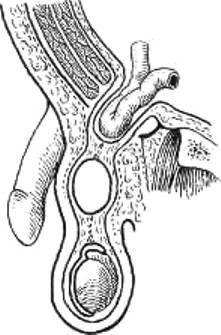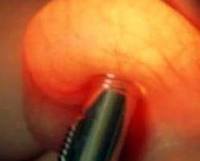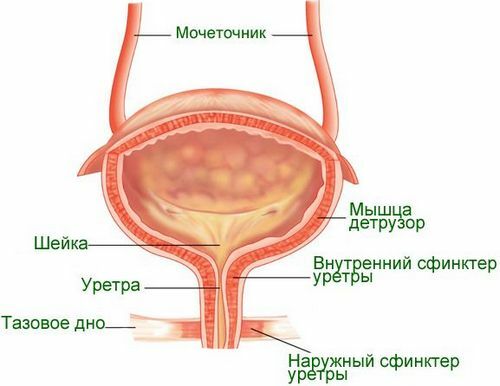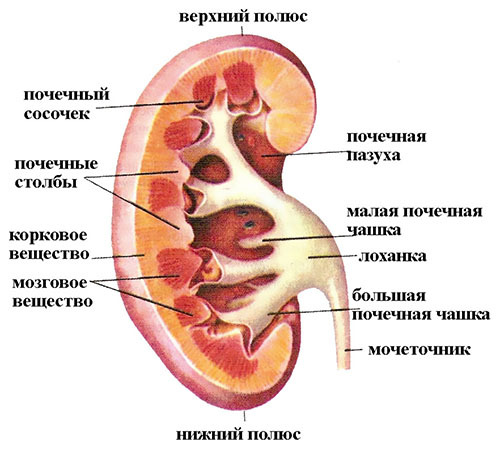Seedal cord cyst: causes, treatment and reviews
The cyst of the spermatic cord is a common disease of the male sexual sphere. The second name of the disease is the funicular. Epidemiology of the pathological condition suggests that every third suffers from ailment. And most of the talk is about the acquired process. According to the nature of the cyst, the spermatic cord is defined as a rounded neoplasm of benign nature, formed by a fibrous capsule and filled with liquid exudate. The composition of exudate includes intercellular fluid sperm. Is such a disease dangerous and what should I know about it?

Seedling cyst
- 1 Causes
- 2 Causes
- 3 Symptoms Symptomatic
- 3 Diagnosis
- 4 Therapy
- 5 Seedal cord cyst in boys
- 6 Feedback on
- 7
findings Reasons for
In medical practice, there are two main groups of causes of development of the spermatic cyst:
- In the first caseTalk about the causes of congenital. This situation is characterized by a violation of the intrauterine development of the reproductive system of the fetus. The vaginal lobe does not completely overgrow, cavitary formations appear between the vas deferens and the epididymis. Such structures are filled only with intercellular fluid and do not contain spermatozoa.
- In the second case we are talking about the acquired funicular. The pathological process develops as a result of the transferred inflammation or, which happens more often, a traumatic lesion of sexual structures. The immediate mechanism of cyst formation is the obstruction of the ducts of the vas deferens. The secret stagnates and bursts the walls of the spermatic cord. The organism, wishing to delimit the conditionally pathological region, concludes the obtained structure in a fibrous capsule. The funicular is formed.
The cyst is common: nearly 65-70% of the male population suffers. In about 40% of cases, the ailment is congenital. In the group of special risk, in addition to the already described categories, there are people suffering from varicocele( due to blood stagnation).
Symptomatic funicularocele
The cyst of the spermatic cord in the early stages gives meager symptoms. Everything is limited to a mild pain syndrome and a slight swelling of the testicle from the affected side. As the pathology develops, the new formation begins to squeeze the surrounding structures. A typical clinical picture develops:
-

With a cyst, drawing, aching pains in the affected area can be observed.
Intensive pains of aching, pulling properties. They become stronger with physical activity, movements, attempts to touch the affected area.
- Edema of the testis, possibly a significant increase in the size of the scrotum.
- Erectile function disorders in older men.
- Behavior change in young children.
Without examination, the cyst is masked for inflammation of the testicles( orchitis), testicular torsion and other conditions. Despite the above symptoms, education often grows for decades, not letting oneself know. The cavity structure is revealed in the diagnosis of other problems of the male sexual sphere. Thus, in the overwhelming majority of cases, it is a question of the cyst as a random finding.
Diagnosis
Urologists or urologists andrologists are engaged in the diagnosis of pathologies of the male genital area. Such a specialist should consult( or advise a child) in order to receive recommendations for further action.
At the primary reception, an oral questioning of the patient is conducted. The doctor interrogates the patient about complaints, their nature, prescription and duration. Then he collects an anamnesis( determines which pathologies the patient suffered earlier).This event plays a huge role, as it makes it possible to determine the circumstances of the onset of a pathological condition.
Specific studies include:
-

Diaphanoscopy or ultrasound of the testicles helps to differentiate cysts from the tumor process
Palpation. During manipulation in the structure of the scrotum and epididymis, a rounded formation of small dimensions is determined. Large cysts are visible to the naked eye. The doctor feels the testicles of the patient in a standing position.
- Diaphanoscopy. It is a translucent structure of the scrotum with the help of a special light emitter. The structure of the testicles reveals the cyst itself. In order to distinguish between cystosis and the tumor process, during which solid neoplasms develop, diaphanoscopy fits best. The cyst during the study looks transparent and completely translucent.
- Ultrasound examination of the scrotum and its structures. It replaced diaphanoscopy. Nevertheless, the latter is still used for a quick survey and assessment of the state of the sexual structures. It allows to determine the type and nature of the neoplasm, to delineate some tumors and tumorous formations from others.
- In exceptional cases, if there is a suspicion of a cancerous process, a magnetic resonance imaging or CT scan with contrast enhancement is indicated.
Therapy
Treatment is exceptionally prompt. It consists in the excision of pathological tissue or its drainage with the help of a catheter( puncture).In the first case, a radical result is achieved to get rid of the pathogenic structure. In the second, relapses are possible. The operation is not always required. In the case of patients of all ages, dynamic observation is shown. Doctors take a wait and see tactic.
Surgical treatment is indicated in two cases:
- There are intense pains in the scrotal and testicles.
- The size of the lesion exceeds 7 mm, and compression of surrounding healthy tissues begins.

Surgery for cyst of the spermatic cord
Cyst of the spermatic cord in boys
The congenital cystic structure in small patients often dissolves on their own until the year of life. Therefore, dynamic observation is shown. The operation is performed on the performance of the boy for two years, in case the cyst has not disappeared. When education grows rapidly, there may be an earlier treatment.
Children undergoing anesthesia undergoing anesthesia.
Feedback on surgical intervention
According to the reviews of patients and their parents( if it's about children), surgery is an extreme measure. It is not always required. In most cases, a dynamic observation is necessary, and the operation is carried out only according to the indications.
Radical excision of the cavity helps to cope with the problem once and for all. The operation itself does not last long, differs in its simplicity and rarely gives complications. Nevertheless, surgical intervention remains a surgical intervention. Just so, without strict testimony and doctor's recommendation to do the operation is not necessary.
Conclusions
The cyst of the spermatic cord is a very common phenomenon, which is rarely characterized by vivid symptoms. For the most part, this is a silent and inconspicuous pathology, which, however, at the advanced stages can put an end to reproductive health. To prevent this from happening, it is necessary to consult a specialist, undergo a checkup and, if necessary, treat.
Recommended for viewing:



